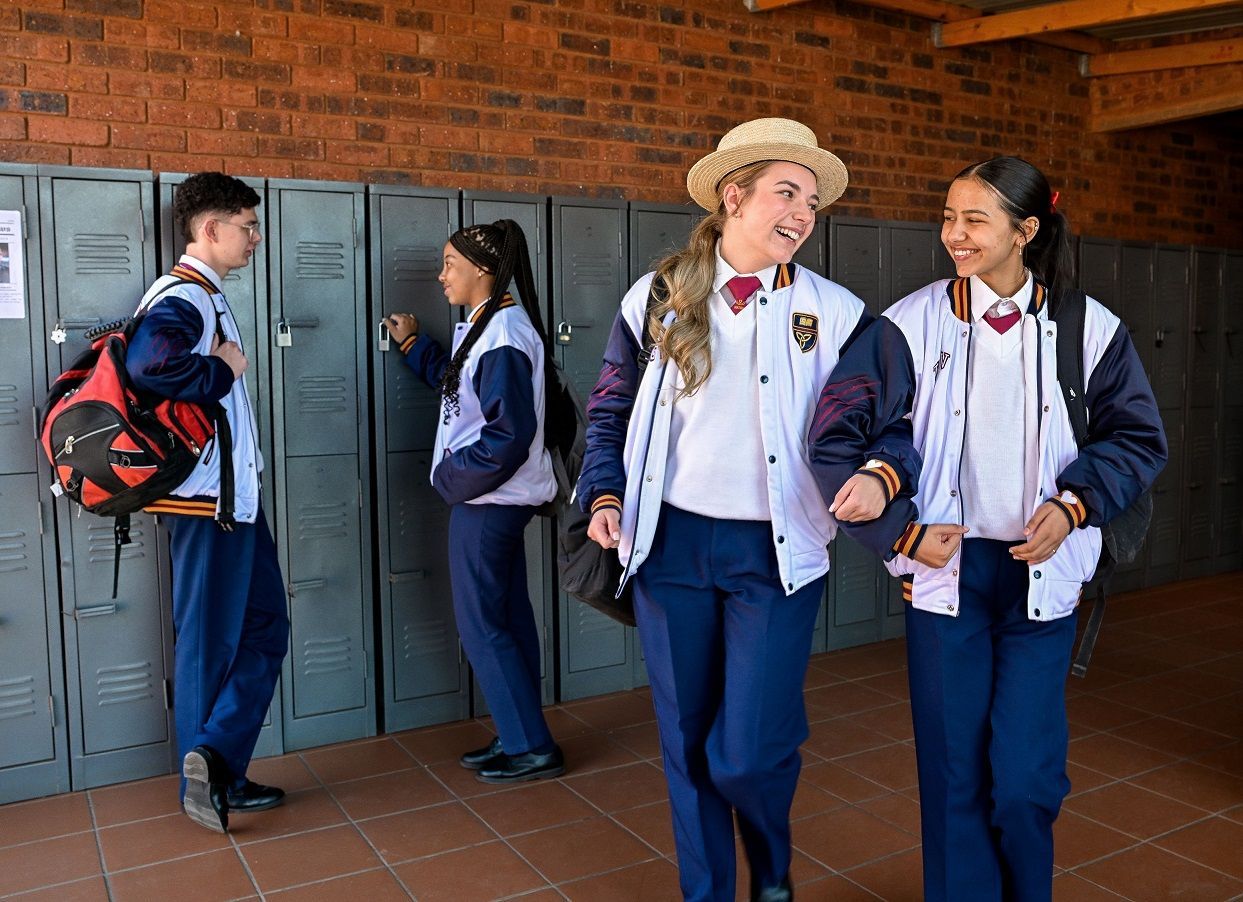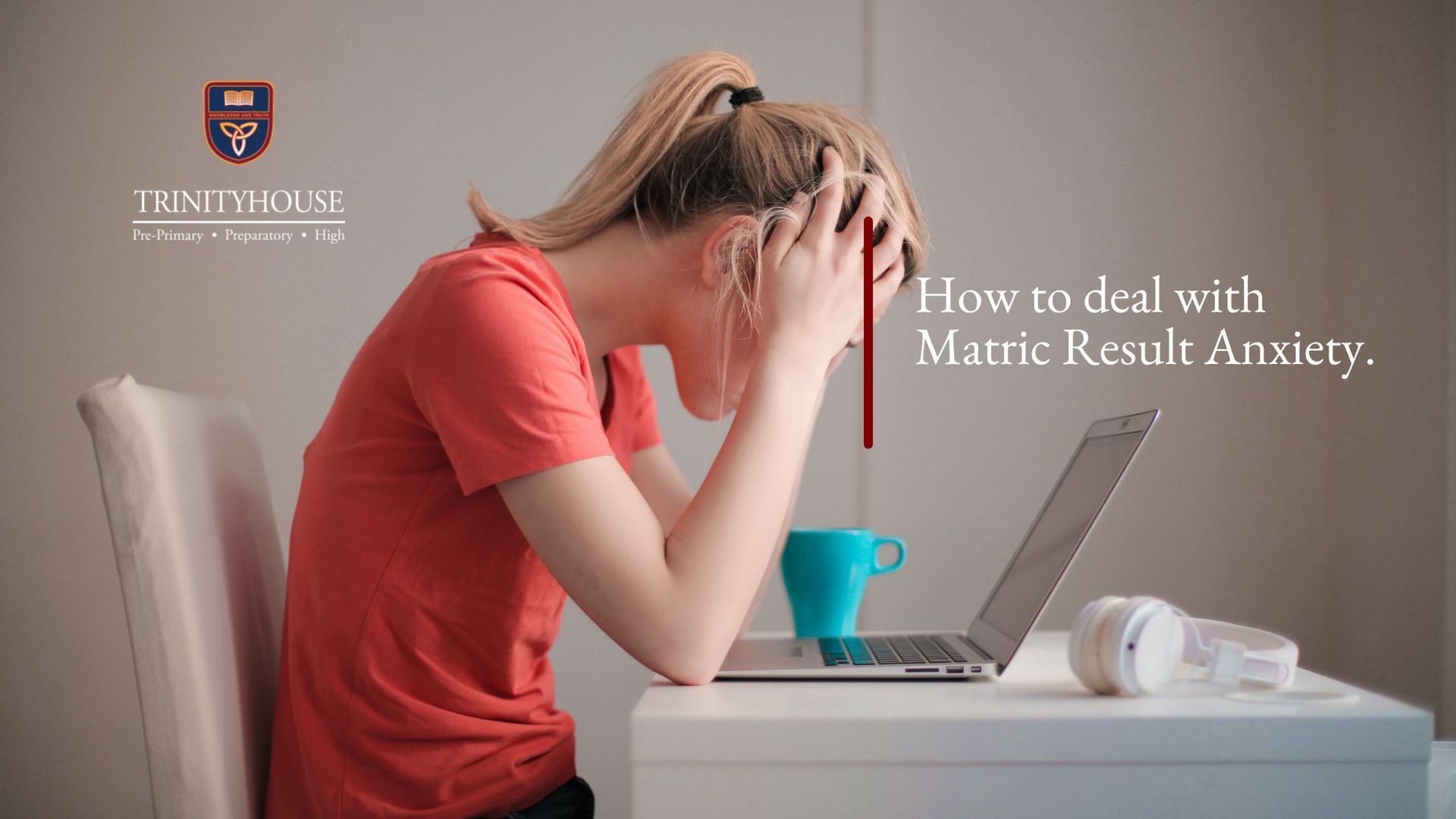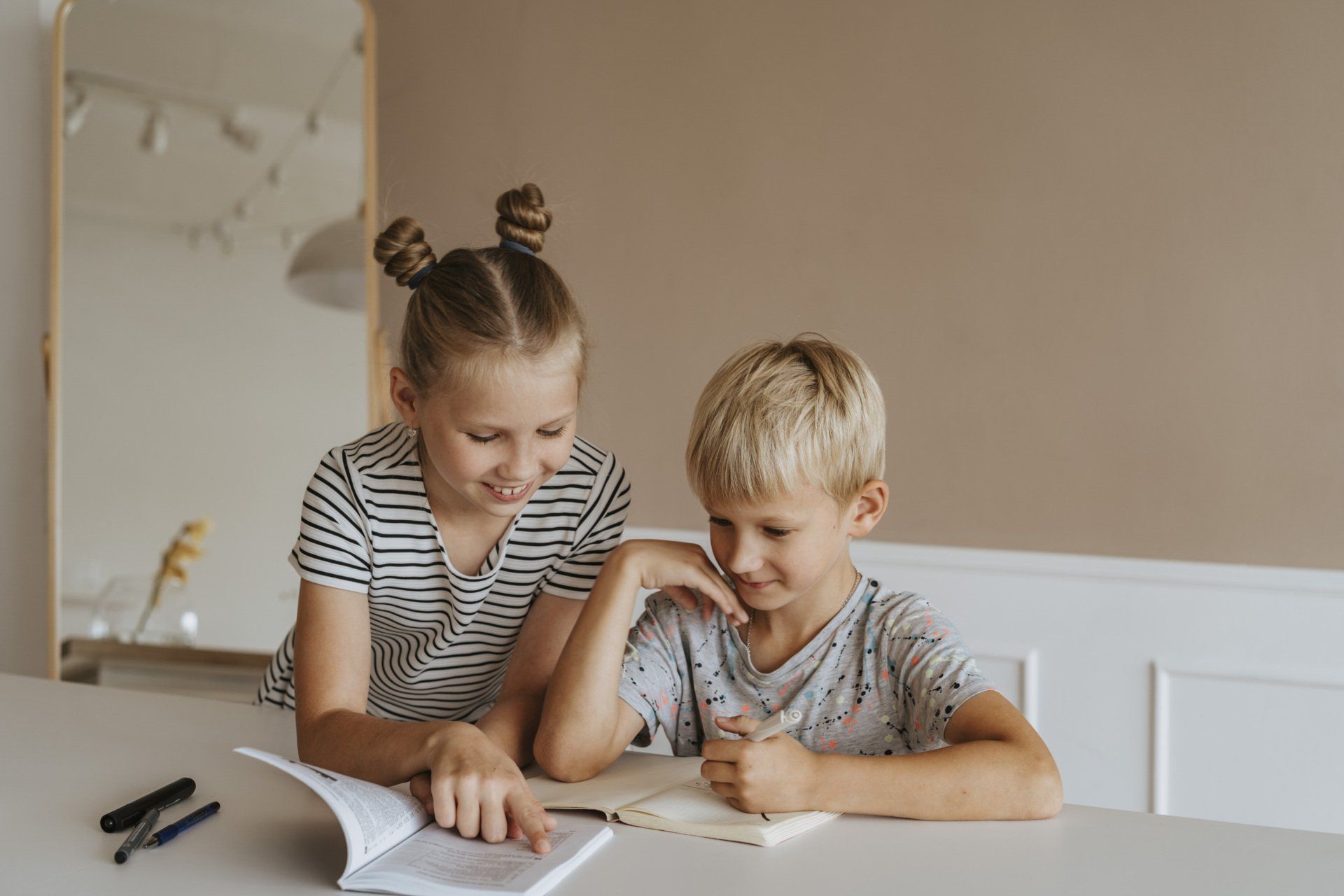Five Easter Crafts You Will Love
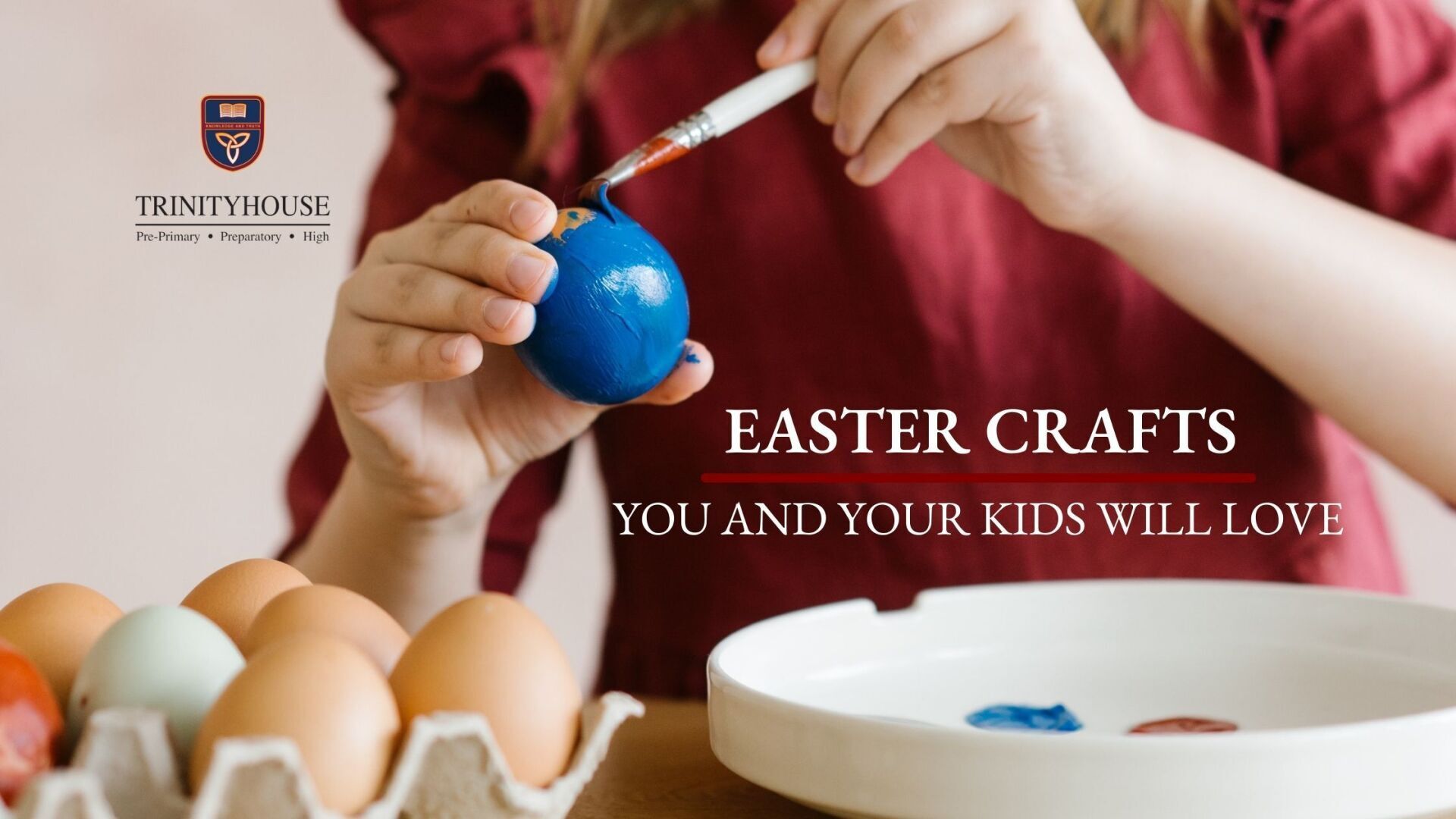
Easter Sunday is a special holiday in our Christian calendar because it celebrates the resurrection of Jesus Christ. But it is also a special day for families because it’s a day to share time, share appreciation, share stories and to share in the fun of some easy Easter crafts. This Easter holiday, let the egg-citement begin with these fun, family-friendly activities for kids - of all ages.
Activity 1: Pipe Cleaner Eggs
An easy take on the Easter decorations aspect of Easter fun, and one that will engage fine motor skills too

What you need:
· Dry, clean and cooled boiled eggs
· Or polystyrene craft eggs
· Colourful pipe cleaners
· Crafting glue
How to do it:
1. Attach one end of a pipe cleaner to the top of the egg using a dot of glue and allow to dry.
2. Wrap the pipe cleaner around the egg, taking care to keep the coils close together so that the egg is covered.
3. Use dots of glue as you go to secure the pipe cleaner to the egg.
4. Cut off the excess piece of pipe cleaner once you get to the bottom of the egg.
5. You may need three or four pipe cleaners per egg.
Activity 2: Salt Dough Flower Eggs
This Easter craft idea is a goodie for a secret lesson on measuring and counting with the ingredients as you go.

What you need:
· ½ cup of table salt
· ½ cup warm (not boiling) water
· 1 cup cake flour
· 2 Tbsp sunflower or canola oil
· Food colouring
· Plastic wrap
· Egg-shaped cookie cutter or knife
· Rolling pin
· Skewer or straw
· Small flowers or herbs
· Ribbon
How to do it:
1. Mix the water and salt together in a large bowl until it is fully dissolved.
2. Add two or three drops of food colouring of your choice and stir until fully combined.
3. Add the flour and mix until you have a crumbly dough mixture. Get your child to use their hands to make this dough, breaking up any large clumps to combine it all well.
4. Add the oil and continue to mix with the hands until fully combined.
5. Form the dough into a ball and cover tightly with plastic wrap.
6. Set this aside for 10 minutes.
7. Sprinkle your work surface and rolling pin with flour, and help your child roll out the dough until it’s about half a centimetre thick.
8. Use the cookie cutter or a knife to cut out egg shapes.
9. Use the skewer or straw to punch a small hole through the top of the egg shapes.
10. Press the herbs or flowers into the dough to make impressions.
11. Bake in the oven at 90°C for about two hours (or air-dry overnight)
12. If you like, paint the dry eggs using acrylic or craft paint.
13. Thread a ribbon through the hole and hang your pretty crafts up
Activity 3: Pot Bunny
These make cute gifts, or you could pot a pretty plant in them and use them as centerpieces on your Easter lunch table.
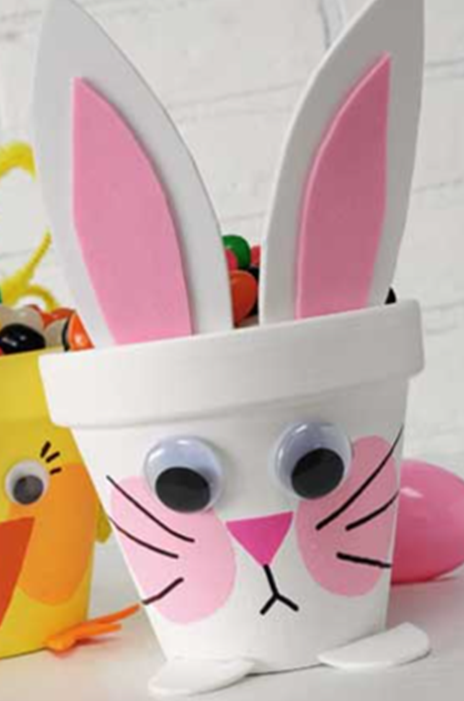
What you need:
· Clay flowerpot in the size of your choice
· Acrylic craft paint in white and pink
· Paint brushes
· Permanent marker
· Googly eyes (2 per pot)
· Craft foam or cardboard in white and pink
· Scissors
· Pencil
· Craft glue or glue gun
How to do it:
1. Paint the flowerpot with the white paint and allow to dry
2. While that’s drying, draw bunny ear shapes and two bunny paw shapes on the white craft foam and cut them out.
3. Draw smaller bunny ear shapes (for the inner ear) and a small triangle for the nose on the pink foam and cut them out.
4. Stick the pink inner ears onto the white ears.
5. Next, paint the cheeks onto the white bunny pot by using the pink paint to make two circles and paint an inverted triangle on for the nose.
6. One that’s dry, stick the googly eyes, ears and paws onto the flower pot to form the bunny’s features.
7. Lastly, draw the bunny’s mouth and whispers on using the marker.
Activity 4: Easter Bunny Wreath
This something cute gets those hand muscled working (and uses up any extra wool supplies you may have lying around).
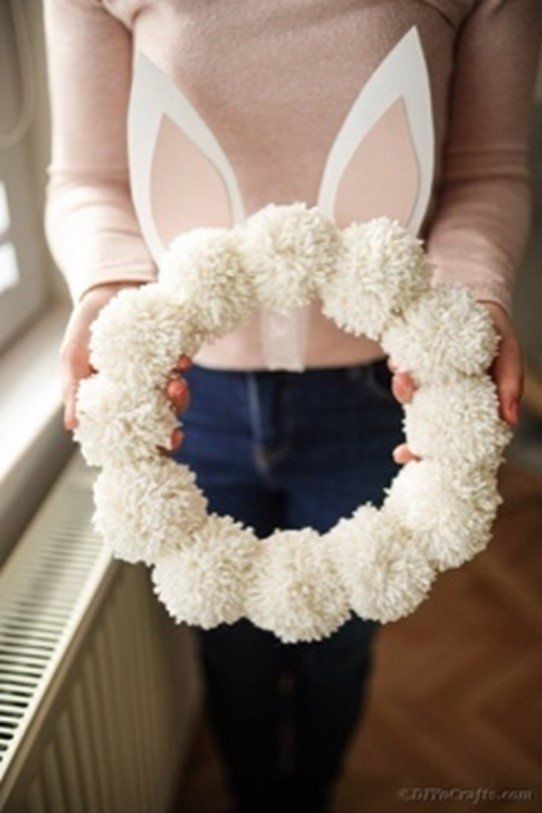
What you need:
· 2 to 3 balls of white wool (or coloured wool of your choice)
· Sturdy cardboard for wreath
· White and pink craft paper or cardboard
· Ribbon
· Pencil
· Craft knife
· Scissors
· Glue
How to do it:
1. Get your child to wrap the wool around their hand 10 to 25 times (depending on how full you want your pom-pom).
2. Cut the string of wool off from the ball and gently slide the loops of wool of your child’s hand.
3. Thread a string of wool around the middle of the loops of wool, tighten and tie a knot
4. Cut the two end pieces of the loop so that it’s tied in the middle with loose ends all around.
5. Fluff the ends out and trim them so that they form an even, fluffy ball.
6. Repeat this process until you have about 12 pom poms.
7. Now, draw a circle with a diameter of about 25cm onto the cardboard. Draw a smaller circle inside of this so that you have a wreath shape that’s about 6cm wide.
8. Cut this out using the craft knife.
9. Glue the pom poms onto this wreathe shape, making sure that all the carboard is covered.
10. Draw two bunny ear shapes onto the white paper and two smaller bunny ear shapes onto the pink paper and cut these out.
11. Glue the pink ear shapes onto the white ones and glue these ears to the wreath (it’s best to glue them onto the back side).
12. Attach your ribbon to the wreath and hang it up.
Activity 5: Easter Bunny T-shirt
This is a more involved craft, but the result is a cute top that can be worn at Easter events.
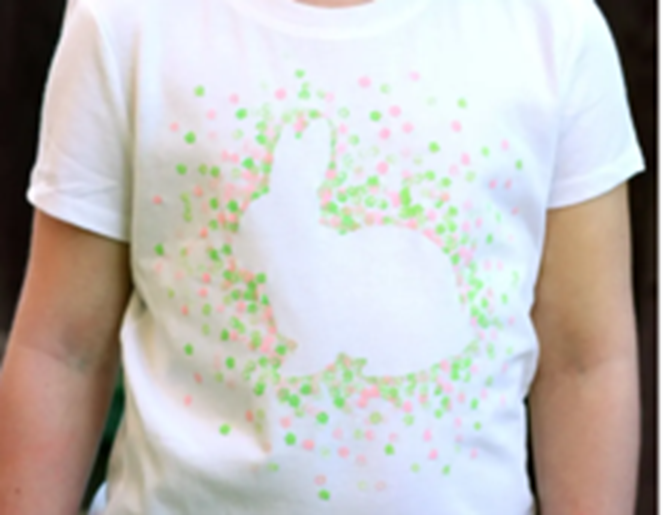
What you’ll need:
· Fabric paint in 2 to 3 colours of your choice
· White T-shirt
· Paper
· Pencil
· Small eraser (the one on the tip of a pencil is perfect)
· Craft knife
· Scissors
· Paper plate or paint palette
How to do it:
· Draw a bunny shape onto a piece of paper and cut this out.
· Use the craft knife to cut out a flower shape on the eraser – this will be the stamp.
· Place the bunny shape onto the centre of the T-shirt, you can secure it in place using safety pins.
· Place some paint onto the paper plate or paint palette.
· Dip the stamp into the paint and stamp this onto the T-shirt, around and over the bunny shape.
· Concentrate the stamping around the edge of the bunny shape so that it forms a silhouette on the shirt.
· Allow to dry and remove the bunny-shaped paper – some fabric paints have additional setting instructions, so be sure to follow those for the paint you’ve used.
Sources
Festive Easter Crafts Kids and Adults Will Love
Easter-stamped Easter Bunny Shirt
Easy DIY Pom Pom Easter Bunny Wreath
Image credit
(image from: Festive Easter Crafts Kids and Adults Will Love
(image from: Easy DIY Pom Pom Easter Bunny Wreath
(image from: Easter-stamped Easter Bunny Shirt
